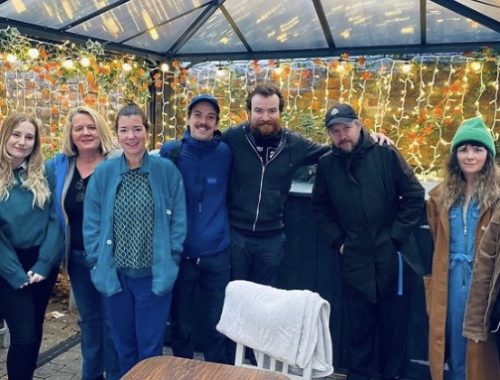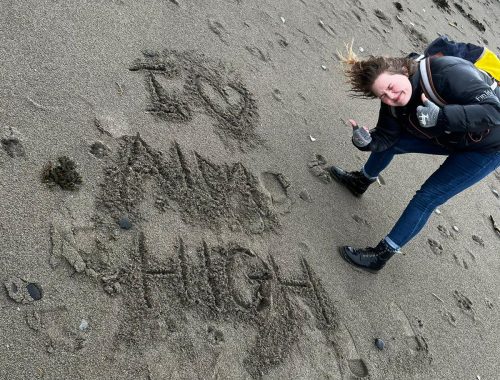Movies, now more than ever!

The development, green-lighting and production processes of making a film are often filled with stops and starts and pushes and pulls. These oppositions and internal politics make the film industry and the filmmaking process fertile ground for drama, as demonstrated by the prevalence of films about making films. My mind immediately jumps to how Jean-Luc Godard characterised the dynamic between director Fritz Lang and producer Jeremy Prokosch in his film Contempt/ Le Mepris (1963) – an indictment of his own experience clashing with producers. This, unfortunately, functions as a segue to my placement situation, and the greatest challenge I have faced… getting started. This blog post, therefore, will reflect on my ongoing quest to complete my placement as well as on my first day at Panavision in Belfast. To reflect on these experiences I will return to Borton’s model of reflection (1970, in Jasper 2013) as I feel that, more than the other reflective models, it is best suited to my ongoing situation of attempting to overcome an unexpected obstacle.

What?
Going into this semester my placement was set. I would be shadowing a producer on an upcoming independent co-produced feature. Initially set to begin in January, the shoot was pushed into the beginning of March. However, just a week before I was set to begin, I received a call from an Executive Producer on the film who informed me that production had been delayed after one investor raised concerns about the screenplay. With script re-writes ongoing the shoot was pushed into the summer, beyond my placement deadline. Frustratingly, this put me right back at square one, but it also served as a useful reminder of the difficulties of getting a film made, and indeed the apparent fickleness of the industry. Angus Finney (2015) describes how “many independently financed features crawl through a vague greenlight stage.” This vagueness and uncertainty is particularly pertinent when talking about co-productions which rely on funding coming from two or more investors. Again, the situation reminded me of another film, Robert Altman’s The Player (1992). Specifically, it was the slogan for the film’s fictional movie studio, “Movies, now more than ever!” that entered my mind – the enthusiasm and promise of movies belying the unpredictable and uncertain realities of getting one made.

So What?
The news left me feeling panicked. With an increasingly finite amount of time how would I secure and complete an alternative placement? This is a question I will partly be able to answer.
As I now turn my attention towards completing this blog post, and because my pursuit is ongoing, I am glad to have this process of reflection in order to slow down, stop and re-orient myself; or, to use it as a consolidation of learning exercise. In other words, in what way has this setback and the steps I have taken to complete my placement allowed me to learn?
As I have touched on already, the setback served as a useful learning experience; as someone who aspires to make films it is important to understand the ‘un-sureties’ involved in getting a film off the runway.
Returning to the task at hand, writer Samuel Johnson said (Quoted in Boswell, 1791) that “when a man knows he is to be hanged in a fortnight, it concentrates his mind wonderfully.” And while the looming placement deadline is certainly not a death sentence, it has had a similar activating effect on me. What I mean is, it has forced me out of a situation where I didn’t need to take action – where I was comfortable – into a situation where I have had to proactively reach out to and make contact with new people.
In my renewed attempts to secure a placement, I was able to heed some of the advice offered in our semester one class on communication. Having the ability to communicate effectively in the workplace, and also with possible placement providers is key to making a good impression and integrating well into a new social environment.
This became clear to me when comparing the two main avenues I have used to contact potential providers: email and phone call. I can’t recall actually receiving a reply to any emails I sent out. Meanwhile, every phone call I made resulted in some kind of progress – if they weren’t able to help me directly, they at least tried to point me to someone who could. This speaks to the social aspect which plays into the willingness of a placement provider to offer a placement. The anonymity of emails make them impersonal and they don’t communicate any of the levels or nuances of language which help to build an idea of a person. If 65% of the workday involves communication (Chui, Michael, et al., 2012) it is important to demonstrate that you can function socially in a professional environment.
After a number of dead ends, my attempts finally paid off when I called Panavision Belfast. They were immediately open to helping me out and on Thursday 24th March I was able to complete my first placement hours, attending a crew day in Belfast. While Panavision aren’t able to fulfil the entirety of my 100 hours, the experience they have offered me has made completing my placement much easier. Furthermore, having the opportunity to speak directly with someone at Panavision and develop rapport through conversation certainly impacted on the outcome.


Now What?
My next step is to continue searching for another placement opportunity in order to fulfil the rest of my hours. Moving forward I realise the importance of direct communication in building initial rapport and creating an opportunity for possible placement providers to sympathise with my situation. Equally, I am acutely aware that there are no sure things in this industry, so I appreciate the need to remain diligent and follow any and every lead.
Bibliography
Boswell, James, The Life of Samuel Johnson (London: Henry Baldwin, 1791).
Chui, Michael, et al., The Social Economy: Unlocking value and productivity through social technologies (McKinsey Global Institute, 2012). URL: https://www.mckinsey.com/industries/high-tech/our-insights/the-social-economy (Last accessed 27/03/2022)
Finney, Angus, The International Film Business: A Market Guide Beyond Hollywood (London: Routledge, 2015).
Jasper, Melanie, Beginning Reflective Practice (Melbourne and London: Cengage Learning, 2013).
Filmography
Altman, Robert, The Player. 1992. Film. US: Avenue Pictures/ Spelling Entertainment.
Godard, Jean-Luc, Contempt/ Le Mepris. 1963. Film. FR: Rome- Paris films.
Images
[1]http://twi-ny.com/wp-content/uploads/2012/12/contempt.jpg
You May Also Like

The Importance of Communication in the Workplace
31 March 2022
Improvising like jazz
27 March 2022
